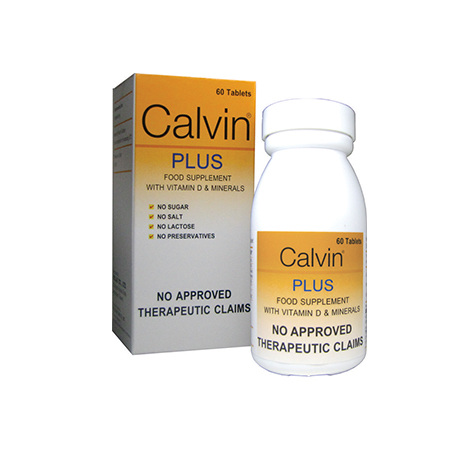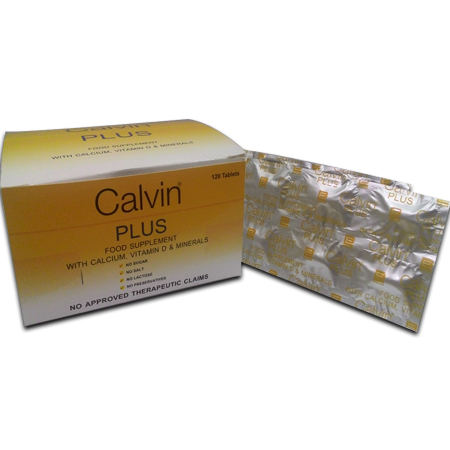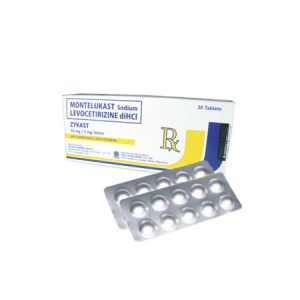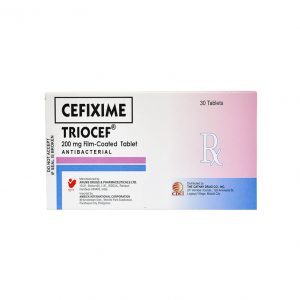Description
THE CATHAY DRUG CO., INC.
DESCRIPTION
FORMULATION
Each tablet contains:
| Calcium carbonate 1500 mg equivalent to Calcium | 600.00 mg |
| Magnesium | 40.00 mg |
| Manganese | 1.80 mg |
| Zinc | 7.5 mg |
| Copper | 1.00 mg |
| Vitamin D3 (Cholecalciferol) | 200.00 IU |
| Boron | 250.00 μg |
PHARMACOLOGY
Calcium carbonate
Calcium carbonate is a basic inorganic salt used as an antacid. It acts by neutralizing
hydrochloric acid in gastric secretions. Subsequent increases in pH may inhibit the
action of pepsin. An increase in bicarbonate ions and prostaglandins may also confer
cytoprotective effects. Neutralization of hydrochloric acid results in the formation of
calcium chloride, carbon dioxide and water. Gastric-peptic disease occurs as a result of
an imbalance between protective factors, such as mucus, bicarbonate, and
prostaglandin secretion, and aggressive factors, such as hydrochloric acid, pepsin, and
Helicobacter pylori (H. pylori). Antacids work by restoring acid-base balance,
attenuating the pepsin activity and increasing bicarbonate and prostaglandin secretion.
When used as a nutritional supplement, calcium carbonate may also be used to treat
hypocalcemia by directly increasing calcium stores within the body.
Manganese
Manganese is a trace mineral that is present in tiny amounts in the body. It is found
mostly in bones, the liver, kidneys, and pancreas. Manganese helps the body form
connective tissue, bones, blood clotting factors, and sex hormones. It also plays a role
in fat and carbohydrate metabolism, calcium absorption, and blood sugar regulation.
Manganese is also necessary for normal brain and nerve function.
Magnesium
Magnesium is required for normal bone structure formation and the functioning of many
enzymes. Extracellular magnesium is important for nerve transmission and muscle
electrical potentials. Magnesium is also required for the proper function of nerves,
muscles, and many other parts of the body. In the stomach, magnesium aids in
neutralizing stomach acid and moves stools through the intestine.
Zinc
Zinc is an essential mineral that is naturally present in some foods, added to others, and
available as a dietary supplement. It is involved in numerous aspects of cellular
metabolism. It is required for the catalytic activity of approximately 100 enzymes and it
plays a role in immune function, protein synthesis, wound healing, DNA synthesis, and
cell division. Zinc also supports normal growth and development during pregnancy,
childhood, and adolescence and is required for proper sense of taste and smell.. The
loss of zinc can result in an increased susceptibility to oxidative damage; thus, a daily
intake of zinc is required to maintain a steady state because the body has no
specialized zinc storage system.
Copper
Copper is a trace mineral that is part of several enzymes and proteins that are essential
for adequate use of iron by the body. It plays a role in bone formation and
mineralization. Copper is involved in iron metabolism, melanin pigment formation,
cholesterol metabolism and glucose metabolism.
Cholecalciferol (vitamin D3)
Cholecalciferol (vitamin D3) is a steroid hormone that has an important role in regulating
body levels of calcium and phosphorus, in mineralization of bone, and for the
assimilation of Vitamin A. The classical manifestations of vitamin D deficiency are
rickets, which is seen in children and results in bony deformaties including bowed long
bones. Deficiency in adults leads to the disease osteomalacia. Common causes of
vitamin D deficiency include genetic defects in the vitamin D receptor, severe liver or
kidney disease, and insufficient exposure to sunlight. Vitamin D plays an important role
in maintaining calcium balance and in the regulation of parathyroid hormone (PTH). It
promotes renal reabsorption of calcium, increases intestinal absorption of calcium and
phosphorus, and increases calcium and phosphorus mobilization from bone to plasma.
The active form of vitamin D3 (calcitriol) binds to intracellular receptors that function as
transcription factors to modulate gene expression. Like the receptors for other steroid
hormones and thyroid hormones, the vitamin D receptor has hormone-binding and
DNA-binding domains. The vitamin D receptor forms a complex with another
intracellular receptor, the retinoid-X receptor, and that heterodimer is what binds to
DNA. In most cases studied, the effect is to activate transcription, but situations are also
known in which vitamin D suppresses transcription. Calcitriol increases the serum
calcium concentrations by increasing GI absorption of phosphorus and calcium,
osteoclastic resorption and distal renal tubular reabsorption of calcium. Calcitriol
appears to promote intestinal absorption of calcium through binding to the vitamin D
receptor in the mucosal cytoplasm of the intestine. Subsequently, calcium is absorbed
through formation of a calcium-binding protein.
Boron
Boron is important for calcium metabolism. Boron influences the metabolism of calcium,
copper, magnesium, phosphorus, potassium and vitamin D. Through experiments it was
discovered that the main task boron is to control cell growth. It enhances brain function,
promotes alertness, and plays a role in how the body utilizes energy from fats and
sugars.
PHARMACOKINETICS
Calcium
Calcium is actively absorbed in the duodenum and proximal jejunum by active transport
and passive diffusion. Calcium carbonate is converted to calcium chloride by gastric
acid. Oral bioavailability depends on intestinal pH, the presence of food and dosage.
Maximal absorption of calcium occurs at doses of 500 mg or less taken with food. The
average absorption of calcium ranges from 15-25% in the gastrointestinal tract.
Of the total serum calcium concentration, 50% is in the active ionized form and 5%
forms complexes with phosphates, citrates and other anions. Calcium is rapidly
distributed taken up by skeletal tissues following absorption and distribution into
extracellular fluids. Bone contains 99% of the body’s calcium and the remaining 1% is
approximately equally distributed between intracellular and extracellular fluids.
Calcium is excreted mainly in the feces that comprises of unabsorbed calcium and that
secreted through the bile and pancreatic juice into the lumen of the GI tract. The
majority of renally filtered calcium is reabsorbed in the ascending limb of the loop of
Henle and the proximal and distal convoluted tubules. Calcium is also secreted in
sweat.
Manganese
The absorption of manganese occurs throughout the length of the small intestine,
probably via means of a saturable carrier mechanism. However, the absorptive efficacy
of manganese is believed to be poor. It is transported in blood via plasma protein
binding. Organs having the highest concentrations of manganese include the liver,
pancreas, and the kidney with 25% of the body pool is found in bone. Homeostasis is
maintained by hepato-biliary and intestinal secretion. Manganese is eliminated primarily
in the feces.
Magnesium
Magnesium is principally absorbed in the jejunum and ileum by two mechanisms: (1)
active transport that is dependent on vitamin D and parathyroid hormones and, (2) by
diffusion. Magnesium is widely distributed in the soft tissues and skeleton. It is excreted
mainly via renal excretion although small amounts of magnesium are excreted in the
saliva and breast milk.
Zinc
The absorption of zinc occurs throughout the length of the small intestine, mostly in the
jejunum, both by a carrier-mediated process and by diffusion. Zinc is transported in
association with albumin. About 60% is stored in the skeletal muscle, 30% in bone and
around 4-6% in skin. Highest concentrations are found in the eye. Elimination of zinc is
mainly in the feces. Small amounts are also excreted in the urine and through the skin.
Copper
The bioavailability of copper from the diet is about 65-70% depending on a variety of
factors including chemical form, interaction with other metals, and dietary components.
The biological half-life of copper from the diet is 13-33 days with bilary excretion being
the major route of elimination.
Cholecalciferol
Cholecalciferol is readily absorbed with the aid of bile salts from the small intestine via
the lymphatic system and is 50-80% protein bound. Within the liver, cholecalciferal is
hydroxylated to calcidiol (25-hydroxycholecalciferol) by the enzyme 25-hydroxylase.
Within the kidney, calcidiol serves as a substrate for 1-alpha- hydroxylase, yielding
calcitriol (1,25-dihydroxycholecalciferol), the biologically active form of vitamin D3.
Elimination of cholecalciferol is mainly in the bile.
Boron
Most of the intake of boron through the diet is rapidly absorbed from the intestine. It is
distributed throughout the body tissues, with the bones, spleen and thyroid having the
highest concentrations in the body. Boron is mainly excreted in the urine.
INDICATIONS
Calvin Plus is used as a dietary supplement.
DOSAGE AND ADMINISTRATION
Take Calvin Plus 1-2 tablets once a day.
CONTRAINDICATIONS
Calvin is contraindicated in patients with:
conditions associated with hypercalcemia, hypercalciuria
Chronic renal impairment
Renal stones or history of renal stones
Renal osteodystrophy with hyperphosphatemia
Wilson’s disease; hepatic and biliary disease (copper)
WARNINGS AND PRECAUTIONS
The daily dose of calcium should not exceed 1400 mg.
ADVERSE EFFECTS
The following adverse effects have been reported with Calvin Plus:
Metabolism and nutrition disorders: hypercalcemia and hypercalciuria
Gastrointestinal disorders: constipation, flatulence, nausea, abdominal pain,
vomiting and diarrhea
Skin and subcutaneous disorders: pruritus, rash and urticaria
DRUG INTERACTIONS
Concomitant with the other medicaments following may cause the drug interaction:
Cardiac glycosides: the inotropic and toxic effects of cardiac glycosides, calcium
and vitamin D are synergistic and arrhythmias may occur if these drugs are given
together. Monitoring of ECG and serum calcium levels is recommended.
Tetracyclines, thyroxine, bisphosphonates, sodium fluoride, quinolone, and iron:
Calvin Plus may reduce absorption of these medications. It is recommended that
their administration from Calvin Plus be at least 3 hours apart.
Thiazide diuretics: the risk of hypercalcemia should be considered because
thiazides may reduce the urinary calcium excretion and increase the renal
excretion of magnesium.
Systemic corticosteroids: these drugs reduce calcium absorption. An increase in
the dose of Calvin Plus is needed.
Alcohol: may reduce calcium and magnesium absorption
Antacid containing aluminum and laxatives: may reduce calcium absorption
Anticonvulsants: may reduce serum calcium levels and reduce the effects of
vitamin D by accelerating its metabolism.
Penicillamine and trientine: reduce absorption of copper, zinc and vice versa.
Administer 2 hours apart from Calvin Plus.
Oral contraceptives: reduce plasma zinc levels
Cholestyramine, colestipol, liquid paraffin and sucralfate: reduce intestinal
absorption of vitamin D.
AVAILABILITY
HDPE bottles of 60’s.
Strip Pack x 6 tablets (Box of 120 tablets).
STORAGE
Store at temperatures not exceeding 25°C.
Keep out of reach of children.
REFERENCES
www.drugbank.ca







Reviews
There are no reviews yet.